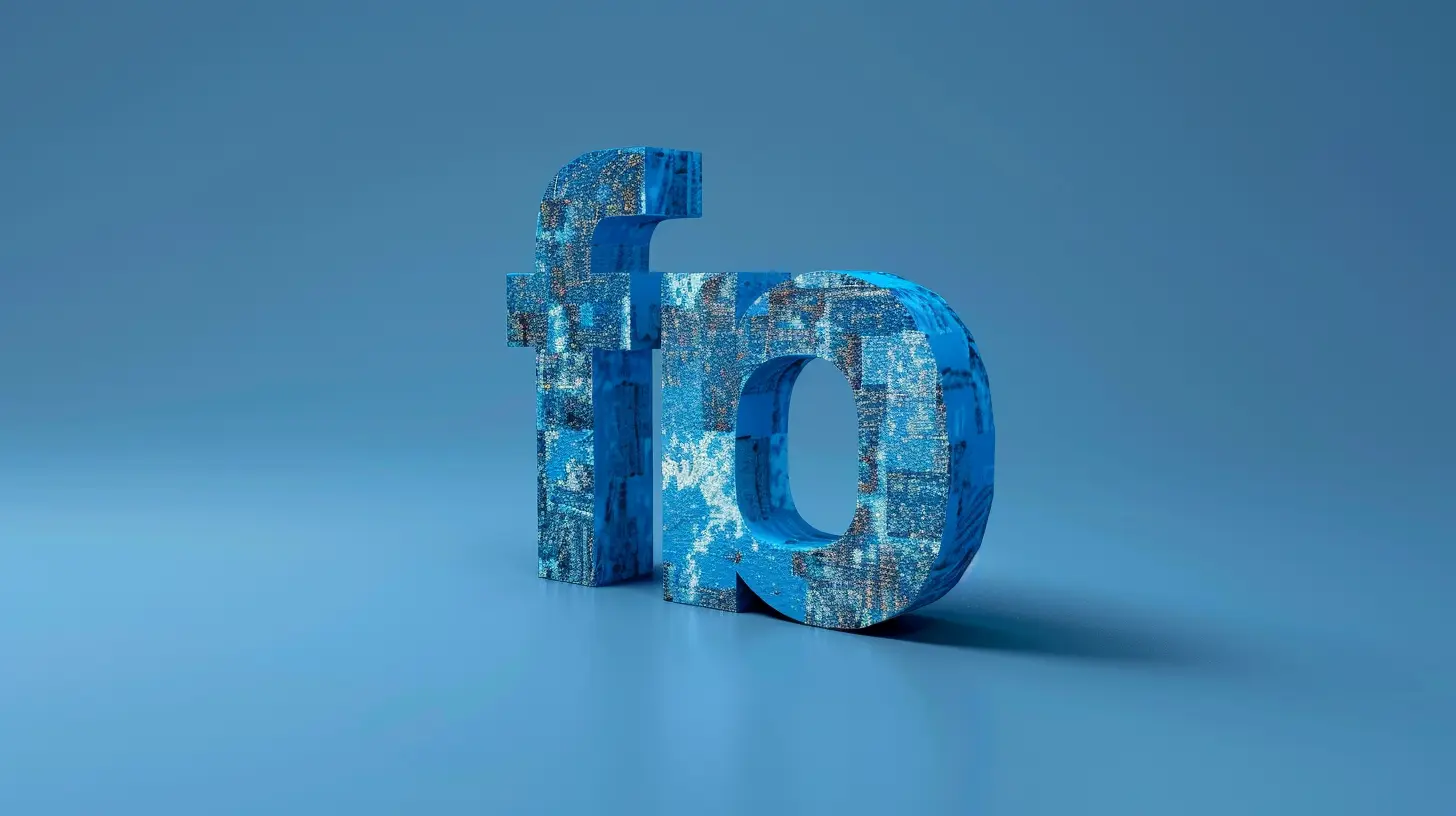How to Use LinkedIn for B2B Digital Marketing Success
21 November 2025
Let’s face it—B2B marketing has evolved. Gone are the days when cold calls and email blasts worked like magic. In today's digital world, if you're not leveraging LinkedIn as part of your B2B strategy, you’re leaving money on the table. Why? Because LinkedIn isn’t just a resume warehouse—it’s the ultimate goldmine for B2B digital marketing.
So, grab a cup of coffee and let’s break down how to use LinkedIn to knock your B2B digital marketing game out of the park.
Why LinkedIn is the Holy Grail of B2B Marketing
Alright, let’s start with the basics. Why bother with LinkedIn when there are so many other platforms like Facebook, Instagram, or even TikTok?Here’s the deal: LinkedIn is specifically designed for professionals. That means your audience isn’t just there to kill time—they’re there to do business.
In fact, over 58 million companies have a presence on LinkedIn, and around 4 out of 5 LinkedIn members drive business decisions.
That’s right. It’s not fluff—it’s where the decision-makers hang out.
Step 1: Optimize Your Company Page (First Impressions Matter!)
Think of your LinkedIn company page like a digital storefront. If it looks dull or outdated, people are going to scroll right past.Here’s what you need to do:
✅ Use a Professional Banner & Logo
Just like a website, branding is everything. Use a sharp, high-resolution logo and a banner that clearly shows what your business is about.✅ Craft a Killer "About" Section
Keep it clear, engaging, and benefit-driven. Don’t just say what you do—explain why it matters. Use keywords your audience is searching for but avoid sounding like a robot.Example:
> “We help SaaS companies scale through personalized digital strategies that bring real results.”
✅ Add Key Services
LinkedIn allows you to showcase services. Use this to your advantage and list what you offer in a way that solves problems.
Step 2: Grow Your Network like a Pro
Remember, LinkedIn is a networking platform. Building relationships is at the heart of B2B success.💡 Connect Intentionally
Don’t hit that “Connect” button on every profile you see. Be strategic. Create a list of your ideal clients or partners and start reaching out with personalized connection requests.Avoid the spammy “I’d like to add you to my professional network” message. Customize it!
Example:
> “Hi [Name], I noticed you’re in the [industry] space—your recent post on [topic] really stood out to me. Would love to connect and share ideas.”
Boom. Simple, human, and effective.
Step 3: Create & Share Valuable Content (And Do It Consistently)
If LinkedIn is the stage, your content is your spotlight. This is where you demonstrate authority and build trust.📢 What Should You Post?
- Industry insights: Share your take on industry trends.- Behind-the-scenes: Show your team, your process, your journey.
- How-to posts: Tips and tricks for solving real problems.
- Case studies: Explain how you helped a client win.
- Video content: Yes, videos stand out BIG time.
👇 Pro Tip:
Use the “Document” feature on LinkedIn to share carousel-style PDFs. People LOVE to swipe through bite-sized tips.But don’t just post and ghost. Engage! Reply to comments, ask questions, and start conversations.
Step 4: Leverage LinkedIn Ads for Targeted Outreach
Okay, organic marketing is great—but let’s talk about LinkedIn Ads. If you're serious about scaling your B2B marketing, ads help you reach the exact people you want.🎯 Why LinkedIn Ads?
Simple. Precision targeting.Want to reach CFOs in SaaS companies with over 200 employees based in New York? You can do that with LinkedIn Ads.
Types of Ads You Can Use:
- Sponsored Content: Boost your posts to a targeted audience.- Message Ads: Slide directly into someone’s LinkedIn inbox.
- Dynamic Ads: Personalized ads based on user data.
- Lead Gen Forms: Capture leads without leaving LinkedIn.
Start small, experiment with different formats, and see what resonates with your audience. Think of it as A/B testing your way to LinkedIn glory.
Step 5: Join & Engage in Relevant LinkedIn Groups
Ever walked into a room where everyone’s talking about your favorite topic? That’s what LinkedIn Groups are like—if you find the right ones.🧠 How to Maximize LinkedIn Groups:
- Join industry-specific groups related to your niche.- Don’t pitch—participate.
- Share valuable insights, comment on other posts, and build credibility.
Over time, you’ll become a familiar face. And when you do share something about your business, people will actually listen.
Step 6: Use LinkedIn Analytics to Measure What’s Working
Here’s the thing—we can’t manage what we don’t measure. LinkedIn gives you detailed analytics for both personal and company pages.📊 What to Track:
- Engagement Rate: Are people liking, commenting, and sharing?- Follower Growth: Are the right people following your page?
- Top Performing Posts: Which content pieces are hitting the mark?
- Click-Through Rates on Ads: Are your ads driving traffic?
Use these insights to double down on what’s working and tweak what’s not.
Step 7: Don’t Sleep on Employee Advocacy
Think about it: Your employees are your brand ambassadors. When they post about your company, it feels more authentic than a corporate post.🧩 How to Get Them Involved:
- Encourage team members to share content.- Provide them with easy-to-share posts and graphics.
- Create a recognition program to reward top advocates.
When your team engages, your reach multiplies—and so does your credibility.
Step 8: Use LinkedIn's Publishing Platform to Build Thought Leadership
Want to be seen as a thought leader? Start publishing articles on LinkedIn.These long-form posts allow you to dive deep into subjects your audience cares about. Share insights, challenge ideas, and educate your readers.
And the best part? These articles stay on your profile permanently, working 24/7 as trust-builders.
Step 9: Use LinkedIn Sales Navigator for Supercharged Prospecting
Manual prospecting is good, but LinkedIn Sales Navigator is like giving your sales team superhero tools.🛠️ With Sales Navigator You Can:
- Get lead recommendations based on your ideal buyer persona.- Save leads and accounts to get updates and alerts.
- Use advanced filters to narrow down your target audience.
Trust me, when you're laser-focused on the right people, your response rates go through the roof.
Step 10: Nurture Leads, Don't Just Sell
Here’s where many businesses mess up—they treat LinkedIn like a one-night stand. But B2B success on LinkedIn is all about the long game.💬 Best Practices for Lead Nurturing:
- After connecting, don’t immediately pitch. Start a real conversation.- Share helpful resources based on your lead’s interests.
- Offer free value—like guides, eBooks, or webinars.
- Follow up without being pushy. Be helpful, not salesy.
If you build trust first, the sale will follow.
A Quick Recap: What You Need for LinkedIn B2B Marketing Success
Let’s tie it all together. For LinkedIn to work its magic in your B2B digital marketing, you need to:1. Optimize your company page.
2. Connect with the right people.
3. Create valuable content consistently.
4. Use LinkedIn Ads strategically.
5. Engage in LinkedIn Groups authentically.
6. Track performance with analytics.
7. Empower your employees to advocate.
8. Publish thought leadership content.
9. Use Sales Navigator for smart prospecting.
10. Nurture leads with value-driven follow-ups.
When done right, LinkedIn isn't just another platform—it becomes your best-performing sales channel.
Final Thoughts
If you’re still treating LinkedIn like a digital resume, you’re seriously underestimating its power. It’s where B2B relationships are born, nurtured, and converted.So, whether you're a marketer, a founder, or part of a sales team—start seeing LinkedIn as your digital battlefield for winning clients. Just remember, it's not about hard selling—it's about smart connecting.
Now go on, log into LinkedIn and start making some power moves!
all images in this post were generated using AI tools
Category:
Digital MarketingAuthor:

Baylor McFarlin
Discussion
rate this article
1 comments
Zella McQuillan
Think of LinkedIn as the networking party where everyone wears business casual—perfect for B2B success! Just don’t be that person who only talks about their cat’s latest career move. Cheers to connections!
November 21, 2025 at 4:53 AM

Baylor McFarlin
Absolutely! LinkedIn is a fantastic platform for meaningful B2B connections—let's keep the focus on professional growth. Cheers!


